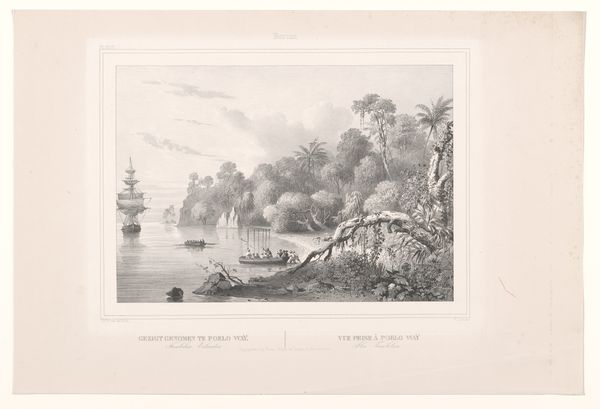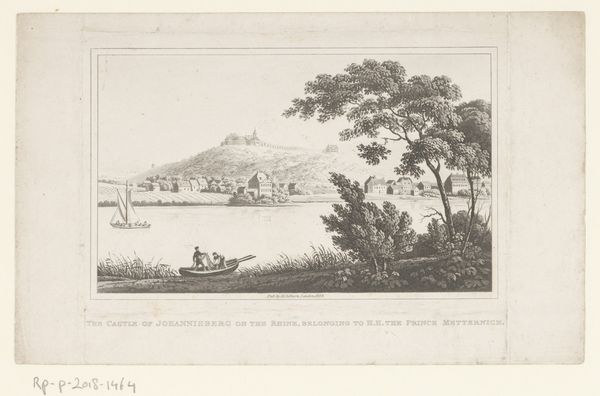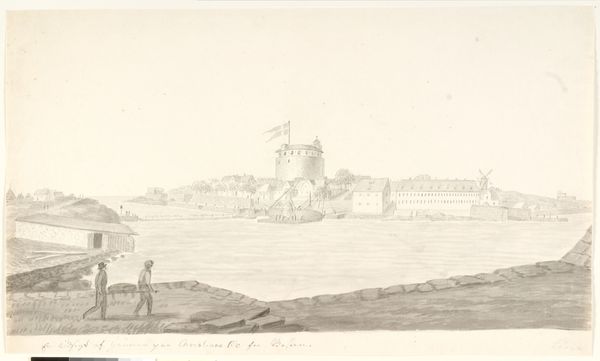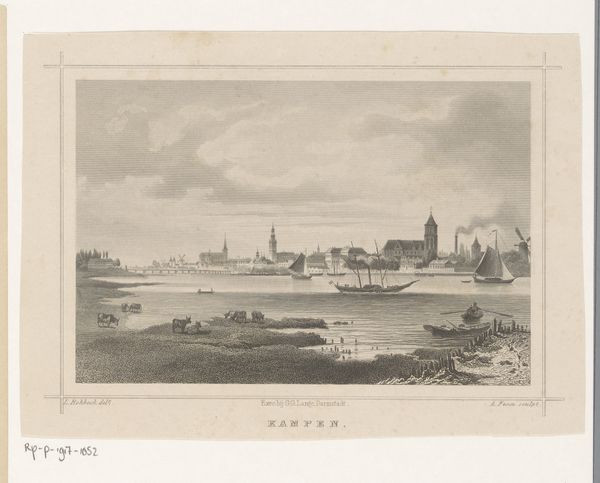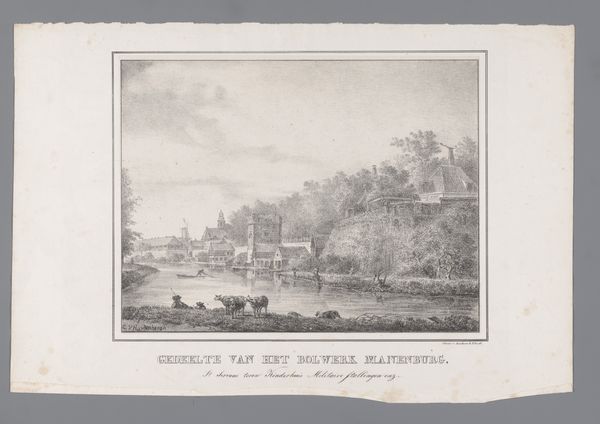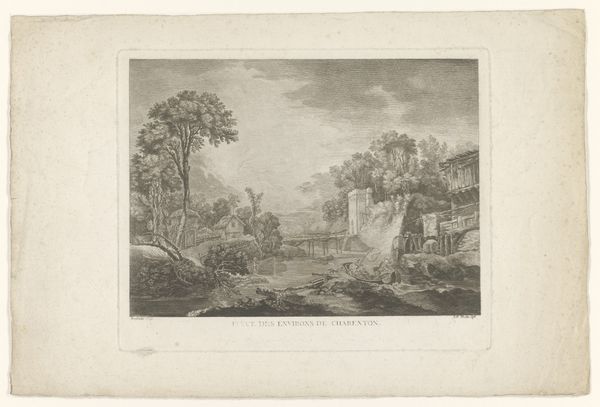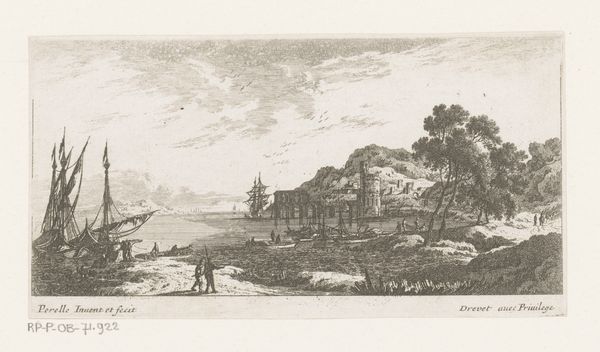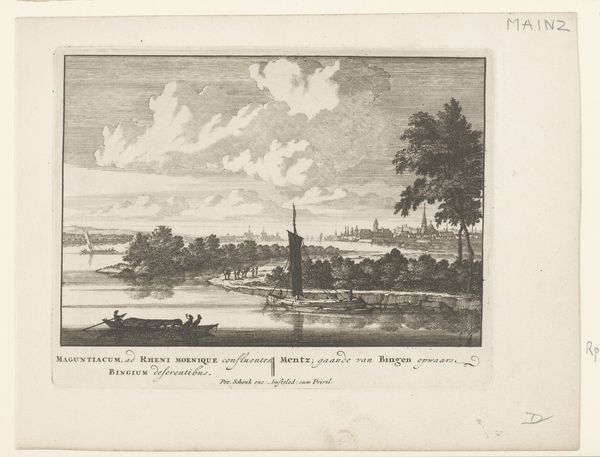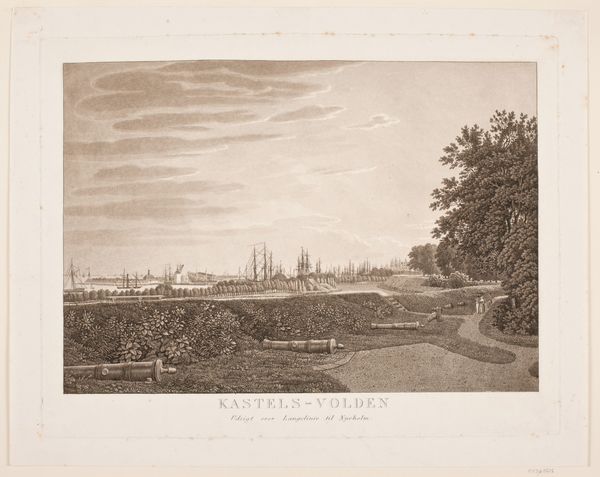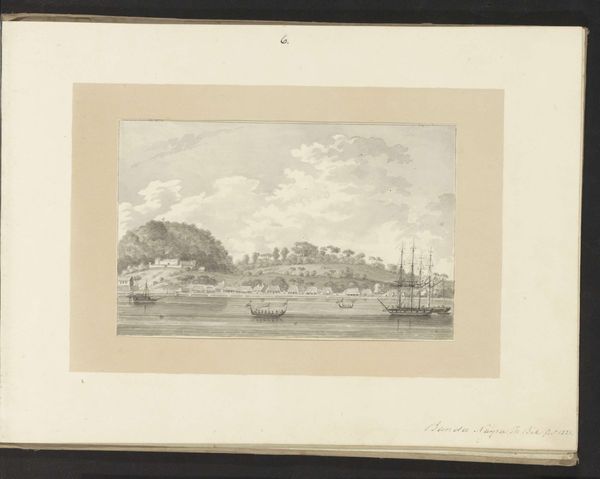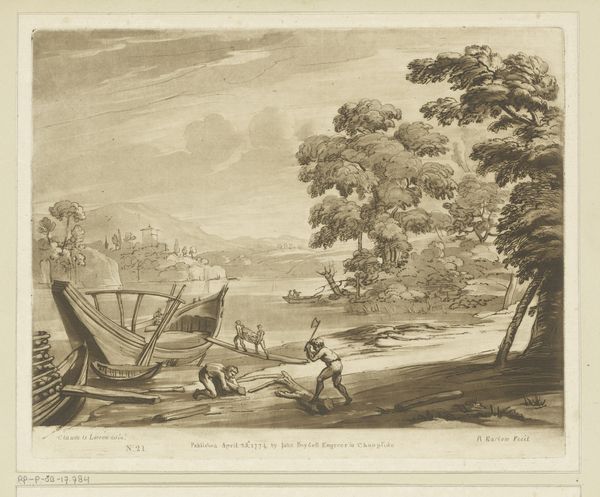
print, engraving
#
dutch-golden-age
# print
#
landscape
#
orientalism
#
cityscape
#
history-painting
#
engraving
Dimensions: height 370 mm, width 553 mm
Copyright: Rijks Museum: Open Domain
Curator: Looking at this print, I'm immediately struck by a sense of quietude, almost melancholy. The muted tones of the engraving, the distant ships, and the small figures give it a very still, contemplative quality. Editor: Indeed. What we're looking at is an engraving titled "Nederlandse handelspost van de VOC op Hirado," or "Dutch Trading Post of the VOC at Hirado." Created around 1832 by Wilhelmus van Groenewoud, this piece, housed right here at the Rijksmuseum, gives us a fascinating glimpse into a significant moment in Dutch colonial history. Curator: The scene itself seems very… ordered. The neat row of buildings, the defined waterway, the controlled nature – it suggests a deliberate imposition of structure on the landscape. A visualization of power, perhaps? Editor: Precisely. It speaks to the Dutch East India Company's presence in Japan, specifically on the island of Hirado. For a time, Hirado was the center of Dutch trade with Japan, making this site a crucial link in a vast global network. Curator: What interests me is how the artist has chosen to depict it. While geographically a cityscape, it definitely possesses elements of a romantic landscape as well. We’re given just enough local texture with those pine trees in the foreground to root it in time and place. Editor: I agree. By then, the Dutch were restricted to Dejima. This representation almost feels like a longing glance back at that relatively freer time in Hirado, and in terms of its style, partakes of the fascination with Orientalism that swept across Europe in the 19th century. It subtly exoticizes the scene while also documenting it. The image would have been charged with historical and political meaning. Curator: Ultimately, this small engraving evokes the complicated legacy of trade, cultural exchange, and the lasting impact of colonialism. It’s both visually serene and politically complex, making it a truly compelling image. Editor: Yes, and studying this particular print, held within the museum’s larger collection, allows us to understand both the grandeur and the potential cruelty embedded in historical enterprises.
Comments
No comments
Be the first to comment and join the conversation on the ultimate creative platform.
